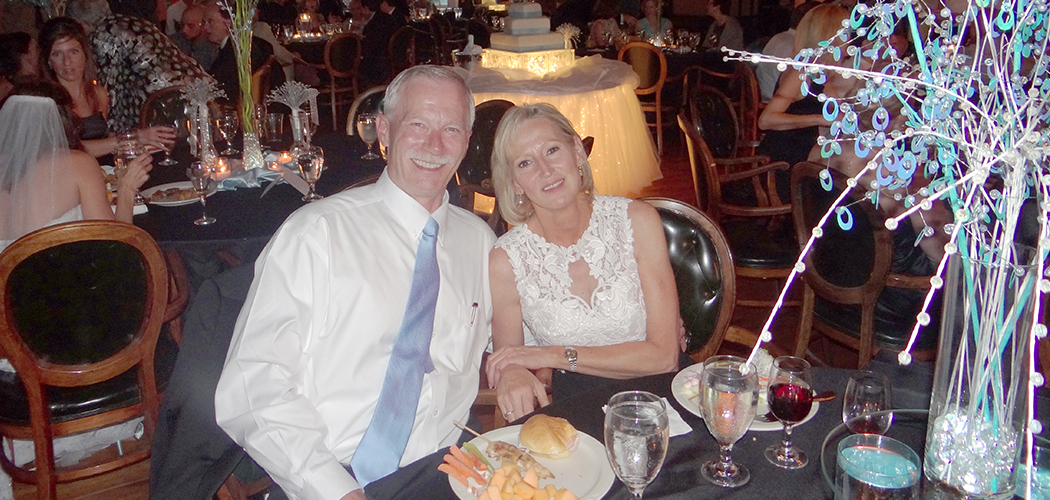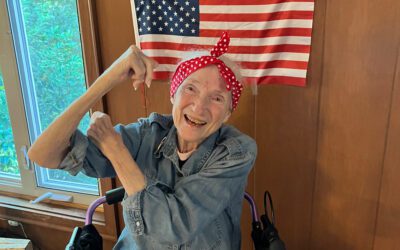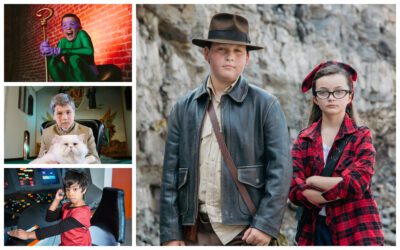[title subtitle=”words: Marla Cantrell
images:courtesy Maryl Koeth and Bob Purvis”][/title]
On March 26, 1996, Bob Purvis lay in a field outside West Memphis, Arkansas, waiting to see the Hale-Bopp Comet, which had been discovered the year before. He stretched out his long legs. He looked up at the velvet sky, seeking that bright light with its two tails of blue and yellow. The comet was a thing of wonder, visible to the naked eye, and so strong that in the months to come it would be seen in daylight in China, Mongolia, and eastern Siberia.
But Bob had trouble concentrating as he felt the earth beneath him, as he searched the sky above. He’d recently met a woman: smart, intriguing, funny. He’d asked her to come with him, and she’d tentatively agreed, but after waiting way too long for her to show up, he’d left alone.
The comet, he thought, was a beautiful thing, but nothing compared to Maryl Koeth.
Why she’d rejected him had a lot to do with her state of mind. She was getting out of a marriage, was waiting to sign divorce papers, and was feeling that trepidation common to those who’ve been stung by love.
She also thought lying in a field in the middle of the night with an astronomical wonder above you might be a bad idea, especially if you were with a man as good looking as Bob.
Not that she didn’t like him. Earlier that day, the two had driven to Wapanocca National Wildlife Refuge in the Arkansas Delta, where Maryl was delighted by the dozens of muskrats she’d seen.
They were in the area to attend a state tourism conference. Bob was representing Eureka Springs Chamber of Commerce, and Maryl was (and is) the director of the Van Buren Advertising and Promotion Commission.
So, there was Bob, alone in a field. He stayed three hours before driving back to the hotel.
Three days later, Maryl called him. That call lasted maybe twenty minutes. A few nights after, Bob called Maryl. That call lasted two hours. Soon, they were talking two or three times a day, something that continues even now.
It was during those talks that the two got to know each other. “I think we’ve talked more to each other in the last twenty-one years than five married couples put together,” Bob says.
“When you’re on the phone, there are no distractions,” Maryl says. “You can’t see the person, so you have to listen, and you get to know who they are.”
Late on a Sunday night, less than a month after their first outing to see the muskrats, an F3 tornado, a half-mile wide with winds reaching 200 miles an hour, hit Van Buren and Fort Smith, killing two children in Fort Smith and injuring nearly 100 more across the area. In Sebastian and Crawford Counties, 500 houses were destroyed, and more than 600 were damaged. When the sun came out, the world had changed. One man found a car in his swimming pool. Another, who’d fought in Vietnam, said living through the tornado was the first time in his life that he’d been afraid. News crews repeatedly said the path of destruction looked like a war zone. This time, they were right.
Maryl’s parents’ house, a block from her own, was gone. Her house was so damaged she had to move out while it was being repaired. But in those first days, before she’d relocated, those phone calls with Bob were her lifeline. Maryl, getting by with the help of a generator, could look out the window and see piles of rubble everywhere.
“I was the only person left in my neighborhood,” Maryl says. “We would talk on the phone for four or five hours at night. My only other human contacts at night were City Police, State Police, and Game and Fish who would patrol.
“When you’re on the phone, there are no distractions. You can’t see the person, so you have to listen, and you get to know who they are.”
“At the same time, he was building his house on a mountain in Eureka Springs. He would regale me with his adventures.”
When May rolled around, Bob came off the mountain long enough to take Maryl to dinner. “It was my birthday, and our official first date,” Maryl says.
After that, the two were inseparable. When Bob applied for a position in Pine Bluff two years later, the worry that the move could damage their relationship surfaced, but only for a little while. What they felt for each other was real and strong. When Bob got the job—he retired as executive director of the Pine Bluff Convention Center and Advertising and Promotion Commission on March 1—they made plans to see each other as much as they could.
Twelve years ago, in a bouquet of red roses, Bob hid a diamond ring. The next logical step was marriage, but they didn’t want to set a date while their jobs were keeping them 200 miles apart.
Now, Bob is sixty-six years old, newly retired, and ready. He’s been sorting through a lifetime of possessions to see what he’ll bring with him when he moves to Van Buren to live with Maryl. As he’s describing dismantling his kitchen, Maryl is grinning.
When he talks about her, he’s very nearly evangelical. When he describes the first time he saw her, he says, “She was wearing a gray dress, dark stockings, and she had that blond hair.” His eyes brighten. “She was gorgeous!”
She still is.
When they marry, it will be at Rock Creek Baptist Church in Mansfield. Bill Ross, Maryl’s middle child’s father-in-law, will officiate.
The two have five children between them and seven grandchildren, ranging in age from fifteen years old to two months. All of them will be at the wedding, along with a posse of Maryl’s close friends who have been waiting for this day for two decades.
As for Maryl, she’s been to Tate’s Flower Shop, where she ordered her bouquet. “Make it small, I said to Mary Ann, and use some yellow roses and something white. And she said, ‘So you don’t want the Princess Dianna?’”
Maryl laughs as she tells the story, and then she says that she was going to wear a “nice pair of slacks,” but her granddaughters stepped in, so now she’s in the market for a new dress.
Picking the date was the easiest part of all. They chose March 26, a day they’ve dubbed Muskrat Day since that was the day in 1996 when they drove to Wapanocca, just two people with a mutual attraction who had no idea what the future held.
Today, they are the kind of couple you aspire to be. In the car, at home on the sofa, they hold hands. If they have a disagreement, they talk all the way through it until they get back to that defining sentence, “I love you.”
Maryl and Bob feel immensely lucky to have found each other, and they both believe living separately has been part of the formula that made their love work. “In our lives, we have each had huge challenges that would have put a strain on any marriage, like the tornado and having to relocate my parents,” Maryl says. “But because we were apart and going through this during the week and talking so much on the phone, some of that stress was removed from the relationship.”
As soon as Maryl’s finished, Bob says, “And another part is that we really like each other. We genuinely like each other. We have similar, warped senses of humor, our philosophies are similar. We come up with something wacky, and the other one says, ‘Let’s do it!’”
This admission leads the two down a path filled with memories. They’ve spent afternoons seeing where country roads take them. They’ve spent months remodeling Maryl’s home. They’ve spent weekends planning the future. And they’ve spent the last twenty-one years loving each other so completely, they’ve become forged together.
They are smiling now like new lovers. They are smiling like two people who know a secret the rest of us don’t. Maybe what they understand is that the distance between them these last two decades was really no distance at all. Their hearts, at least, were always in the same place.





